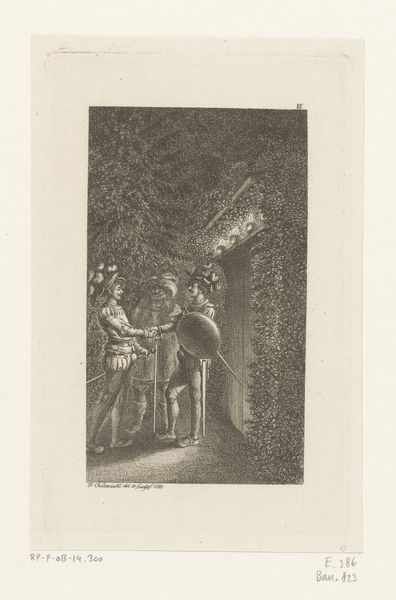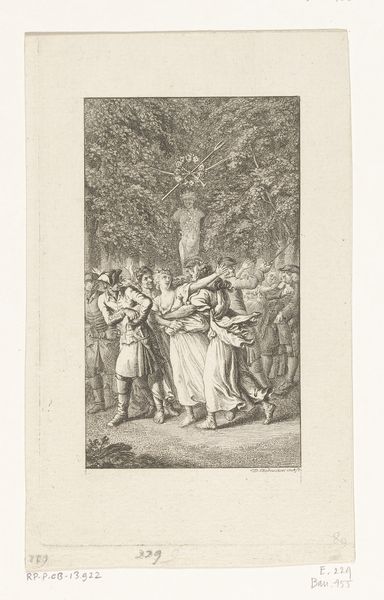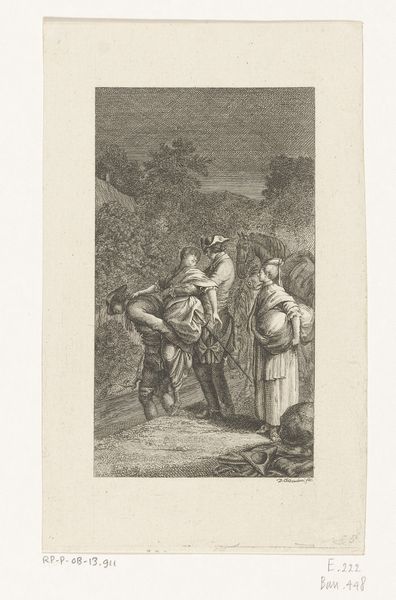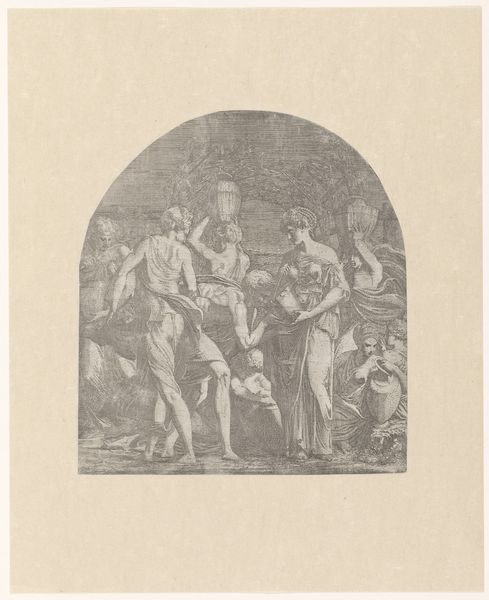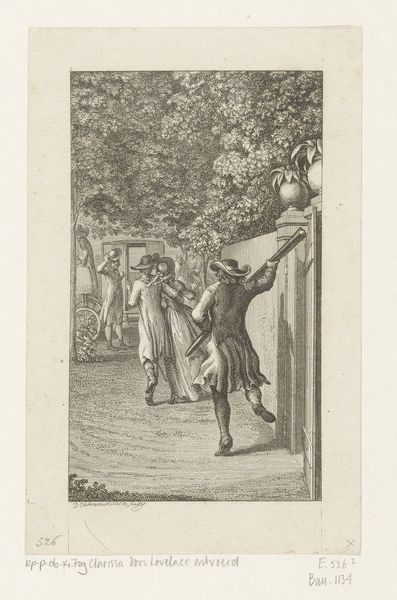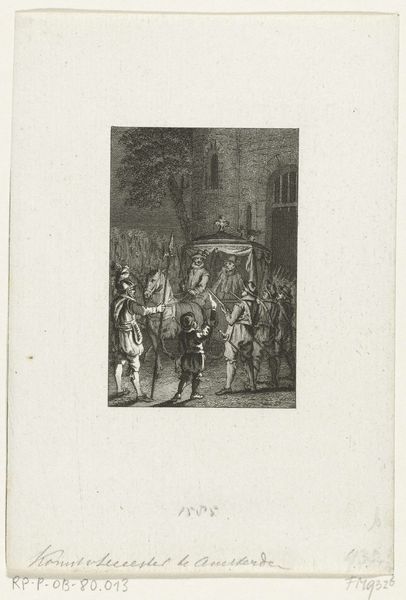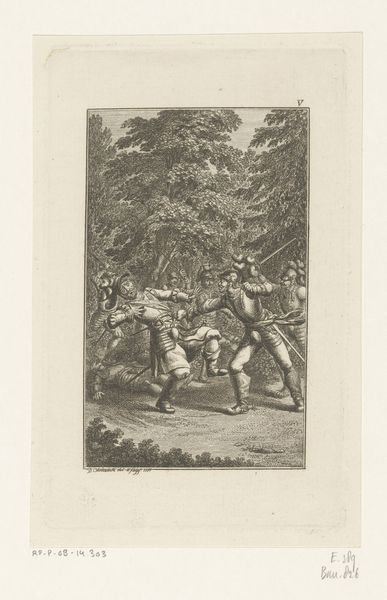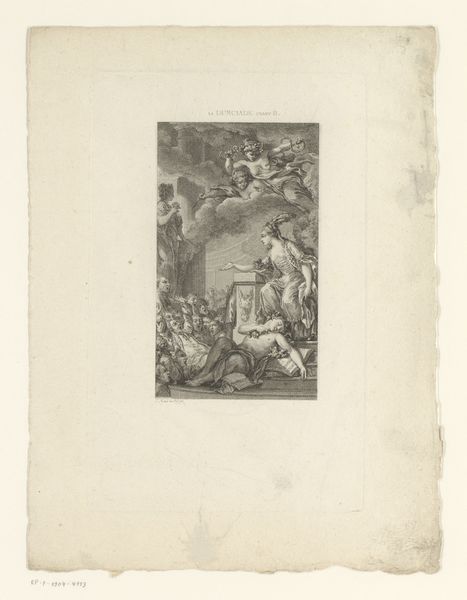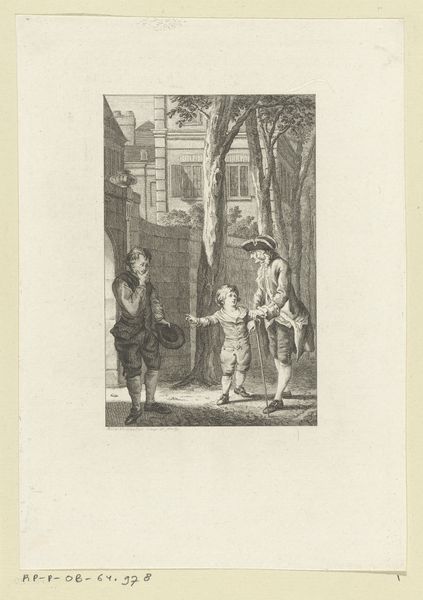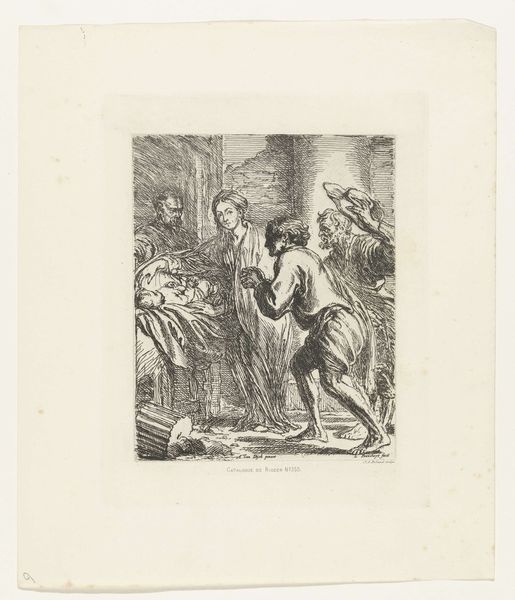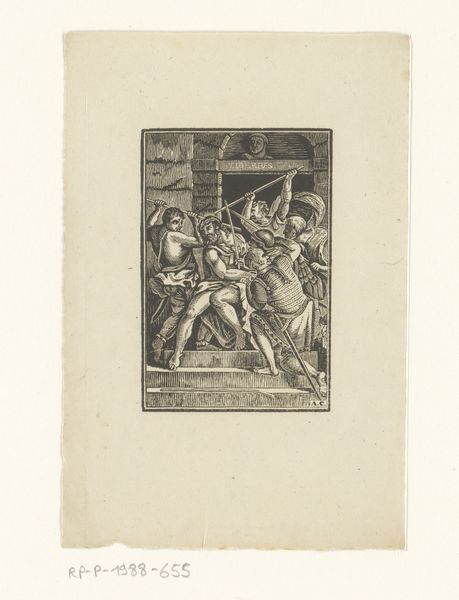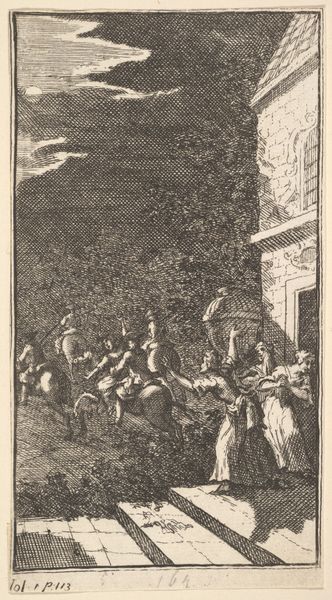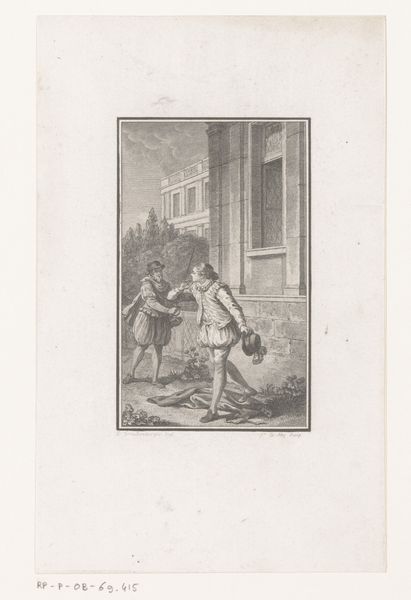
Dimensions: height 173 mm, width 107 mm
Copyright: Rijks Museum: Open Domain
This is Daniel Nikolaus Chodowiecki's "Rolf Krage Appears Unarmed at the Door," an etching made around 1780. Here we witness the symbolic confrontation between Rolf Krage, unarmed and vulnerable, and his armed adversaries. Krage's open-handed gesture is a motif that echoes through history, representing vulnerability, truth, and defiance. Consider the hand: a recurring symbol across cultures. Think of the "Manus Dei" in early Christian art, or the protective hands of Buddha. Here, the open hand suggests honesty, yet it also mirrors a subconscious appeal for mercy. This gesture’s power lies in its universality. Krage’s pose is reminiscent of ancient supplication rituals, seen in countless works from antiquity to the Renaissance. Yet, the scene is not one of simple surrender. The single, unarmed man elicits not only empathy but also admiration. It reminds us that even in the face of overwhelming odds, a single gesture can resonate with profound emotional and psychological impact. The echo of such symbols and gestures continue, appearing and reappearing, each time imbued with new yet familiar significance.
Comments
No comments
Be the first to comment and join the conversation on the ultimate creative platform.
